Ontario Nature Blog
Receive email alerts about breaking conservation
and environmental news.
© Lora Denis
Bat box © Karen Vanderwolf
Bats in Canada face multiple threats from habitat loss and disease. As towns and cities expand, the larger and older trees are being cleared, which means bats are losing their roosts. Bats need a warm and secure place to roost during the day in the summer. A bat box is a simple and effective way to provide additional roosting habitat, but little is known about bat box use in Canada. This is especially important as three bat species in Canada are listed as endangered: little brown bats, northern long-eared bats and tricolored bats. Bats now face additional persecution due to worries about COVID-19, but bats in North America do not have the virus that causes COVID-19.
Of the 18 bat species that are regularly found in Canada, 13 have been documented using bat boxes, although these data come from studies farther south in the United States. Current recommendations on bat box design are based on research in the United States, especially Texas, and in Europe. Since the box design that bats prefer varies by region and species, more information on bat boxes in Canada is urgently needed. There is very little previous research about which bat species prefer which bat box designs in Canada. However, we do know that little brown bats are known to use bat boxes throughout Canada, big brown bats use boxes in some parts of Canada and Yuma bats use boxes in British Columbia.
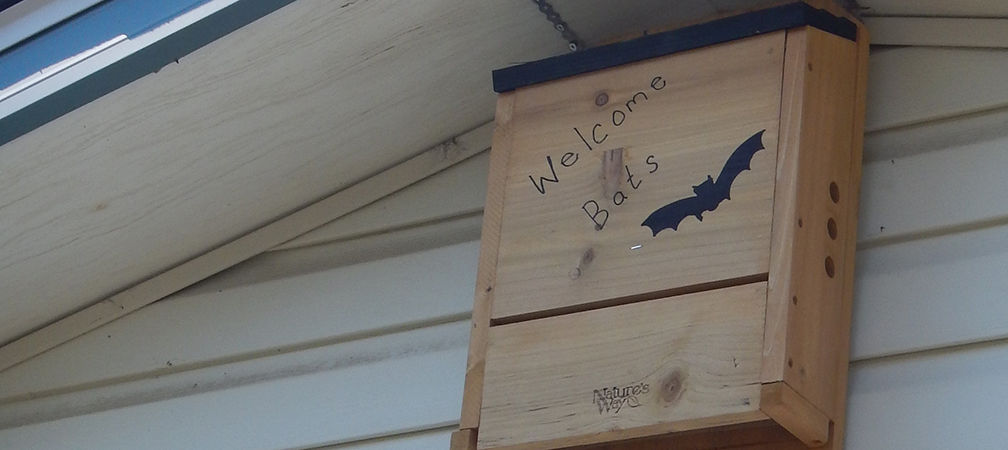
Our research seeks to determine which bat species use bat boxes across Canada, what box designs are preferred by bats, and which temperatures bats prefer for roosting in our northern climate. To accomplish this, we need to know where bat boxes are in Canada, the physical characteristics of the boxes and whether they are being used by bats. Participants will be sent temperature loggers to install in their box and supplies to collect guano (bat poop), as bat species can be identified from guano.
If you have a bat box and would like to participate in this study, please fill out this online multiple-choice survey with questions about your bat box. Participants will be sent microclimate loggers to install in their boxes before bats return in the spring (ideally installation happens in March or April).
More information about which box designs bats use in Canada will help bat conservation by providing recommendations for improving bat box design and placement in our northern climate.
Installing a bat boxes gives bats an alternative to roosting in your house, and since all bats in Canada eat only insects, you may even notice a decrease in the insect population around your house! Bats eat a variety of insects, including agricultural and forestry pests. You can watch bats swooping around your backyard at dusk catching insects midair.
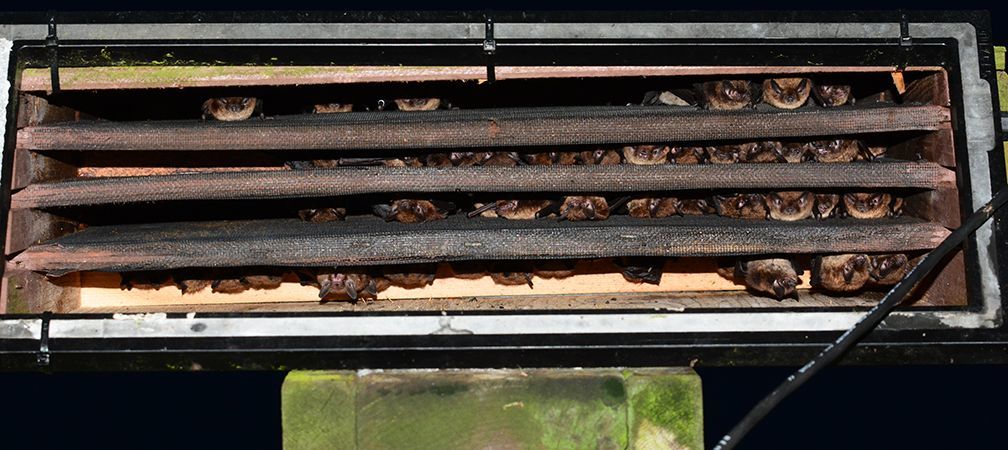
You can tell whether your box is occupied by bats by searching for guano underneath your box and watching your box at sunset in June to count bats as they emerge to eat insects. You can watch an example of bats flying out of bat boxes in Prince Edward Island. You can also shine a light up into the box during the day to see if there are bats inside from May to October in Canada. The boxes will be too cold for bats during the winter.
Not all bat boxes will be occupied in the first year after installation. Occupancy depends on many factors, ranging from the period in which it was installed to the fact that bats are very selective and might need a little time to familiarize themselves with your bat box.
There are no lures or attractants, such as guano, that can attract bats to a bat box, although larger bat boxes with multiple chambers more commonly attract bats than smaller boxes.
Bat boxes are most successful when attached to houses or poles as opposed to trees. Trees shade the box and can block access to the box entrance. If bats are not using your box after two years, try moving the bat box to a new location.
Like tree hollows, bat boxes need to have temperatures that bats like. Bats like hot temperatures, but even in Canada some bat boxes get too hot during the summer, which can increase bat mortality. Temperatures of over 40˚C in bat boxes is too hot, and temperatures in some bat boxes in Canada have been recorded over 50˚C!
Our research group measures the temperature inside bat boxes using temperature loggers that can take a reading every hour over the whole summer. One way to ensure that bats can choose their preferred roosting temperature is to install multiple bat boxes as they will vary in temperature depending on how much direct sunlight they receive.
If you have a bat box, or want to participate in our study, we want to know about it! This project is in partnership with the Wildlife Conservation Society and the Canadian Wildlife Federation.
Please contact us at kjvanderw@gmail.com for more information.


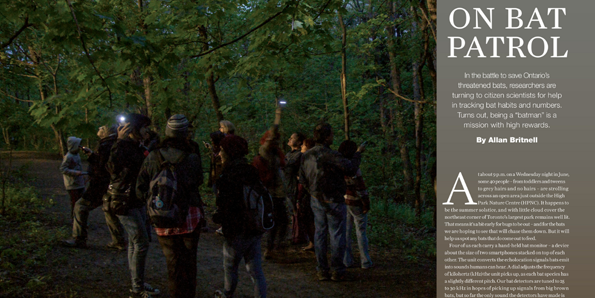
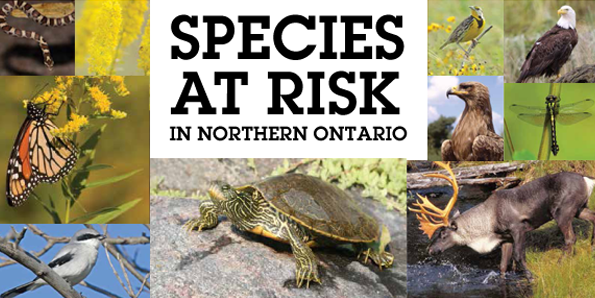

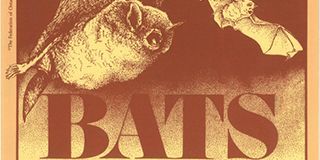
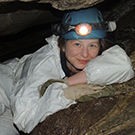
Gananoque Lake Nature Reserve © Smera Sukumar
I would like to put a bat box up in my backyard, but I have no idea where to get one I live in Barrie Ontario Canada can you help me?
I have put up 3 bat boxes at the museum at Provost Alberta. Should be an ideal location near a couple of natural ponds. Haven’t seen any indications of little brown bats but hoping for next year.
can you recommend a bat box design for the Guelph Ontario area?
I think I would like to help with putting up a bat house. I have a cottage in the Kawartha Lakes. Is there any type of wood that you shouldn’t use. I was thinking using pressure treated since it would be outside, but wasn’t sure if it would harm them. Also is there a specific dimension that would be best.?
Do you have any recommendations for bat house plans? I would like to install one on my property in Northumberland.
Hi, I own 20 acres of land on Cape Breton Island. My property has a diversity of birds, animals, insects and trees, and has as well, marshland, a brook, and a river. I am interested in becoming involved with your program and helping to increase the bat population.
I live in rural Maple Ridge B.C
I rent a tiny house on property with landlord’s in big house , a bat flew in through sliding door that was open in landlords house not sure what species, but I want to put up s bat house, I love them any suggestions would be appreciated
Thanks
Hi
I am on the board of the Westboro beach association in Ottawa and we are going to be working with the NCC to install some bat houses in our area. Can you suggest some readings etc for me to learn more about bats in the Ottawa area? I am the bat point person on the board and love bats. Karen
Hi Karen G.,
Thank you for asking!
If you contact CWF’s Karen Vanderwolf at Please contact us at kjvanderw@gmail.com for more information, and ask about resources. I think she may be able to provide more specific reading material for consideration. Thank you very much for helping to protect bats and the Ottawa area’s natural environment!
Noah
Would bat houses be effective in the city of Waterloo Ontario. We do see bats at night over our pool when we have been swimming.
Hi John,
Bat boxes could be helpful! Chances will also increase for the box to be used if they are installed away from brightly lit areas.
Noah
I want to install a heated bat house I just rescued a bat near my home. Id like to participate in a monitoring program. I live in Clarks Harbour Nova Scotia.
Any suggestions?
Looking to buy a bat house. Any suggestions for a good buy?
Hi Ian,
Sorry for the delay.
It is just about time to put bat houses up given the warming conditions!
Local nature stores do carry bat houses, so contacting your local nature/bird stores is a good idea. Take a look for other advice as well such as which direction you should hang the bat house ie. south-east, and whether you might paint it black to help provide bats more warmth.
Kind regards,
Noah
Would be interested in the bat study. We have had a bat house, purchased from Lee Valley but don’t think bats have bee using. In our are, Essa just east of Barrie, there was a disease here about 8 years ago that affected them. Did finally see a bat last summer though.
I always wanted to build Bat Boxes but, never got around it. I guess now is the time to start as it will give me something to do during the winter months.
I have a 2 acre rural property on the cusp of PrinceEdward County and Hastings County. Small spruce/aspen/walnut/locust patch, and near wetlands bordering Trenton along the 401. Interested in batboxes plus stationary acoustic monitoring. Am also a Mammalogy at the ROM. How do I get involved?
Hi Jacqueline,
Thanks for your interest! Please contact Karen at kjvanderw[at]gmail.com for more information.